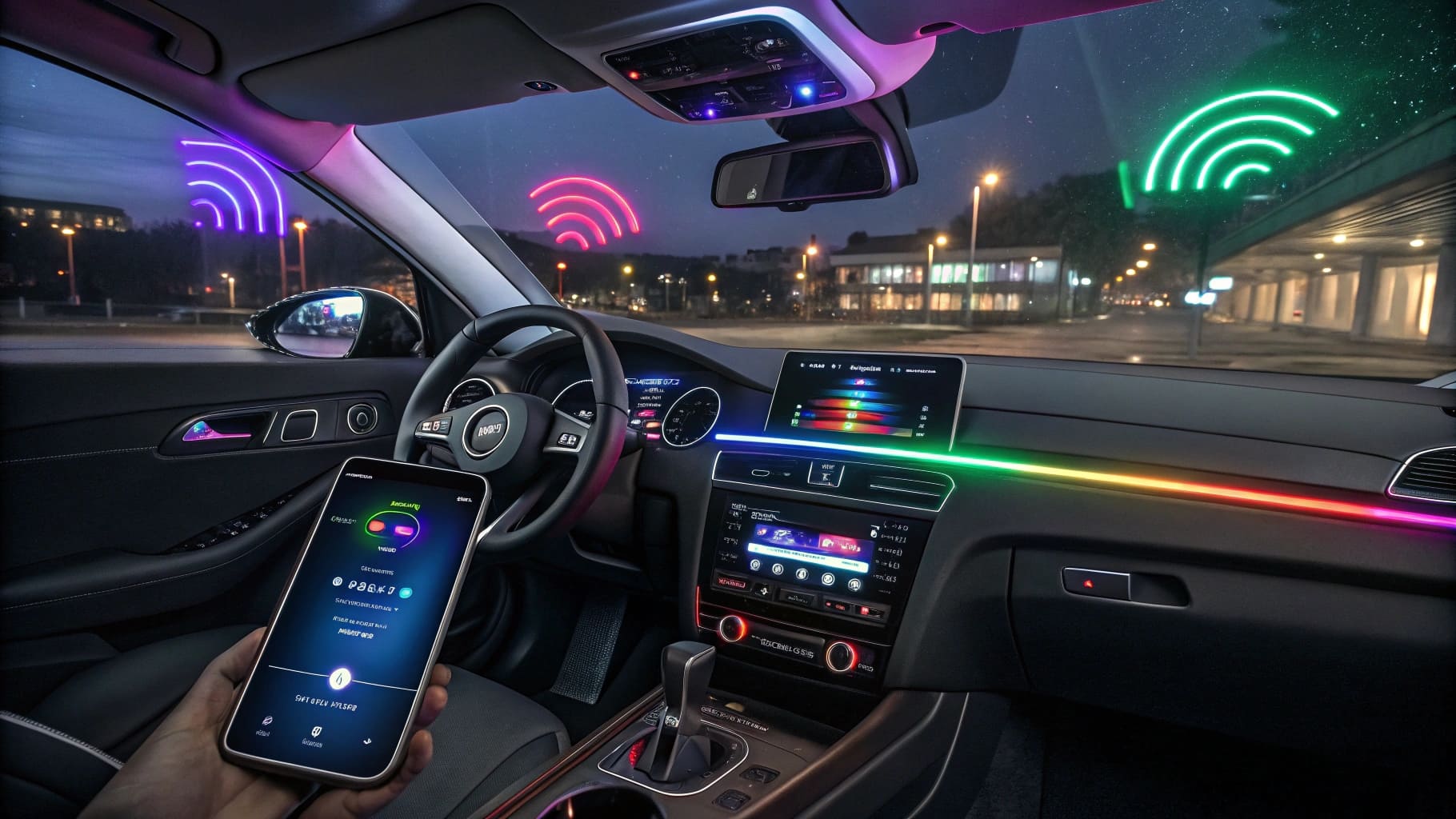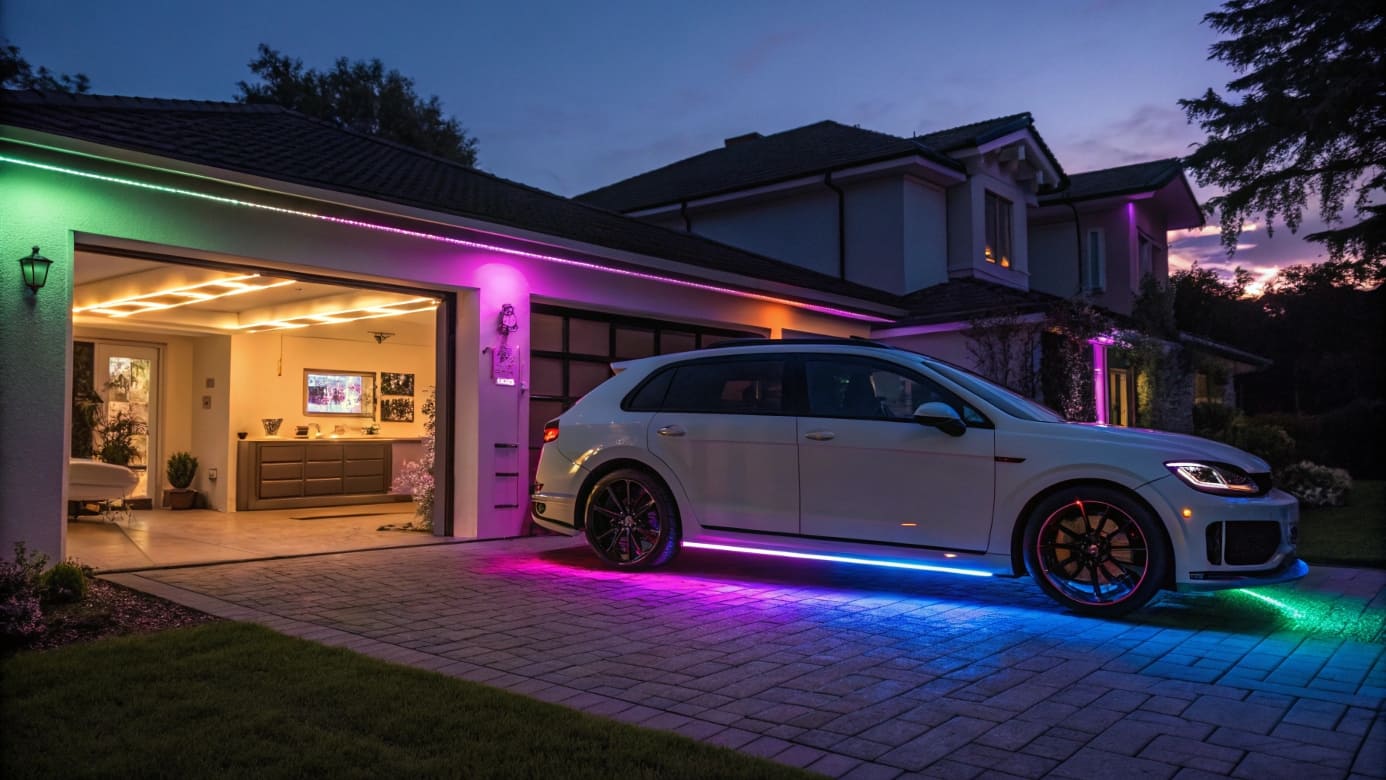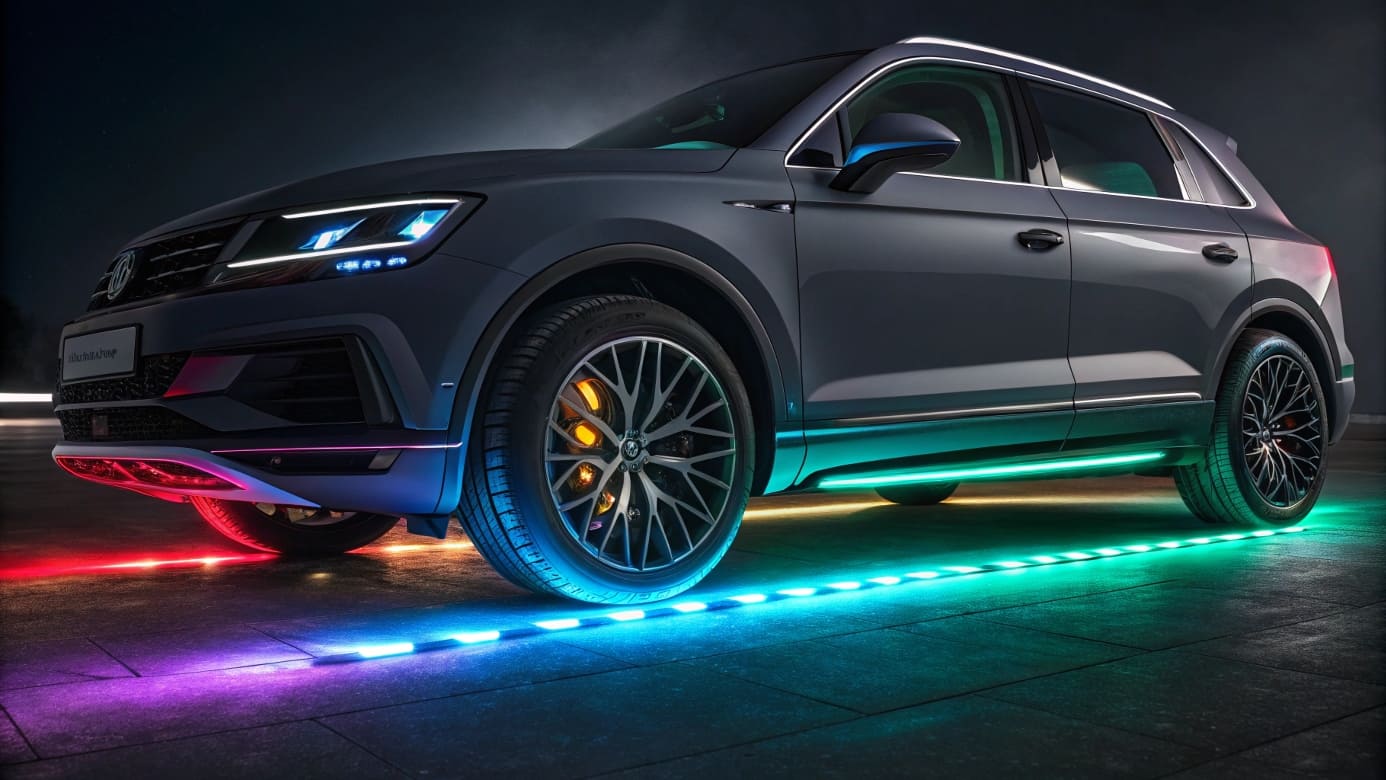Bluetooth LED lights for cars bring a whole new level of convenience and style to vehicle lighting. But how exactly do they work? Let’s dive into the details.
Bluetooth LED lights are controlled wirelessly via a mobile app. They connect through Bluetooth technology, allowing users to adjust settings such as colors, brightness, and effects directly from their smartphones.

Before we dive deeper into how Bluetooth works with LED lighting, it’s important to understand the basics of Bluetooth and how it’s used in these lights.
How do Bluetooth LED lights work?
Bluetooth technology might seem complicated, but it’s actually quite simple to use, especially when paired with LED lights for your car. Let’s break it down.
Bluetooth LED lights work by connecting to your mobile device via Bluetooth. Once connected, the app allows you to control the light's settings and even synchronize it with music or vehicle movements.

Bluetooth LED lights are a popular choice for car owners looking to enhance their vehicle’s interior and exterior lighting. These lights operate on Bluetooth technology1, which is a short-range wireless communication standard. The technology allows for easy pairing between the LED lights and a mobile device, eliminating the need for physical connections or wires.
Once connected, the user can control the lighting through a dedicated app on their phone or tablet. The app typically features a user-friendly interface that lets the user adjust the color, brightness, speed of the lights, and even set dynamic effects like color-changing or flashing patterns.
One of the major advantages of Bluetooth LED lights is the ability to sync the lights with music. This feature makes the lights flash or change colors in response to the beats, providing a dynamic and customizable atmosphere inside the car. Some Bluetooth-enabled LED systems can even sync with vehicle movement, creating a synchronized experience with the car’s motion.
In addition to these features, Bluetooth LED lights are typically low-energy and have a relatively long range (usually up to 30 feet). This ensures users can control their lighting system from a comfortable distance. In my experience with Trontech LED products, I can say that the setup is simple. Our app provides a straightforward interface that allows users to control everything with just a few taps.
Furthermore, Bluetooth LED lights offer a significant upgrade over traditional lighting systems in terms of ease of installation. There are no complicated wires or installations required—just plug the lights into your car’s power supply, download the app, and you’re ready to go.
Comparison Table: Bluetooth LED Light Features
| Feature | Bluetooth LED Lights | Traditional LED Lights |
|---|---|---|
| Control Method | Wireless (App-based) | Wired/Manual |
| Customization Options | Color, Brightness, Effects | Limited (Pre-set) |
| Power Consumption | Low | Higher |
| Installation Complexity | Easy (Plug-and-Play) | Complex (Wiring) |
How does Bluetooth lighting work?
Bluetooth lighting isn’t just for cars. It’s part of a larger trend towards smart homes and wireless technology. But how does it actually work?
Bluetooth lighting works by using Bluetooth-enabled bulbs or fixtures that connect to a mobile app. The app allows you to control lighting settings from a distance, offering convenience and customization.

Bluetooth-enabled lights can be installed in various locations around your home, including living rooms, kitchens, and even outdoor spaces.
Just like with car lights, these bulbs or fixtures communicate with a smartphone or tablet via Bluetooth. Users can control the lighting through a dedicated app. The app typically offers a range of settings, including the ability to turn the lights on or off, adjust their brightness, and change the color to fit the desired atmosphere.
The most popular feature in Bluetooth lighting is the ability to set schedules. Users can program their lights to automatically turn on or off at certain times, which is particularly useful for security purposes or to save energy.
Another advantage of Bluetooth lighting is the flexibility it offers. Since Bluetooth devices don’t require a central hub or Wi-Fi connection, they are generally easier to set up. The range of Bluetooth lighting typically extends up to 30 feet, allowing users to control the lights from a distance. However, the range can be affected by obstacles like walls, so it’s important to consider the layout of your home.
Some Bluetooth lighting systems allow multiple devices to be synced together. This means you can control all your lights in different rooms or areas with a single tap, which is particularly convenient if you have a smart home setup.
Comparison Table: Bluetooth vs Wi-Fi LED Lights
| Feature | Bluetooth LED Lights | Wi-Fi LED Lights |
|---|---|---|
| Control Method | Bluetooth (App-based) | Wi-Fi (App-based) |
| Range | Short (Up to 30 feet) | Long (Usually greater) |
| Power Consumption | Low | Higher |
| Setup | Easy (No Hub Required) | Requires Hub/Router |
What is the difference between Bluetooth and Wi-Fi LED lights?
Bluetooth and Wi-Fi are both wireless technologies, but they differ significantly in their application. Let’s explore these differences and how they impact LED lighting.
Bluetooth LED lights are designed for short-range communication, while Wi-Fi LED lights can connect over longer distances. Bluetooth lights are generally easier to install, but Wi-Fi lights offer more extensive control options.

When deciding between Bluetooth and Wi-Fi LED lights, it’s essential to understand the differences in terms of range, setup, and functionality.
Bluetooth LED lights are designed for short-range communication, usually up to 30 feet. This makes them perfect for smaller applications, like cars or single rooms in a house. The setup process is typically very simple, as Bluetooth devices do not require a router or hub to operate. Once you pair the Bluetooth lights with your phone or tablet, you can start controlling them immediately. This ease of use is one of the main reasons Bluetooth LED lights are so popular for automotive applications, as they don’t require any complex installations.
On the other hand, Wi-Fi LED lights have a much longer range and can be controlled from virtually anywhere, as long as you have an internet connection. This makes Wi-Fi LED lights a better choice for larger areas or if you want to control your lights remotely. Wi-Fi systems, however, often require a router or a hub to connect to, which can add a layer of complexity to the installation.
In terms of functionality, Wi-Fi LED lights often come with more advanced features. Many Wi-Fi systems allow you to integrate the lights with other smart home devices, like voice assistants (Alexa, Google Home) or home automation platforms. This allows for voice control, scheduling, and more intricate settings that are not available with Bluetooth systems.
Here’s a quick comparison table to highlight the key differences:
Comparison Table: Bluetooth vs Wi-Fi LED Lights
| Feature | Bluetooth LED Lights | Wi-Fi LED Lights |
|---|---|---|
| Range | Short (Up to 30 feet) | Long (Unlimited, with Wi-Fi) |
| Installation Complexity | Easy (No Hub Required) | Requires Hub/Router |
| Control Features | Basic (App-based) | Advanced (Voice, Remote) |
| Smart Home Integration | Limited | Extensive |
How do wireless LEDs work?
Wireless LED lights are a game changer in both home and automotive lighting. But how do they actually function without wires?
Wireless LED lights work by using either Bluetooth or Wi-Fi technology to communicate with a controlling device. The lack of wires makes them easier to install and offers more flexibility in usage.

Wireless LED lights are a flexible and convenient solution for anyone looking to eliminate the hassle of wires in their lighting setup. These lights use either Bluetooth or Wi-Fi technology to connect to a mobile app, a smart home hub, or even voice assistants like Amazon Alexa or Google Assistant.
The primary advantage of wireless LEDs is the ease of installation. Without the need for cables or complicated setups, users can place the lights anywhere they like and control them remotely. This makes them particularly useful for cars, where users might want to control the lighting from a distance, or in homes where wires can be unsightly or impractical.
Wireless LED lights are available in many forms, including strips, bulbs, and panels. They come with adjustable settings, such as brightness, color, and effect. Depending on the technology (Bluetooth or Wi-Fi), users can enjoy different levels of control and customization. For instance, Bluetooth lights may be controlled from a short range (ideal for smaller areas), while Wi-Fi lights can be controlled from anywhere with an internet connection.
Key Benefits of Wireless LED Lights
- Easy to install: No wiring required.
- Customizable: Control color, brightness, and effects.
- Flexible placement: Place lights anywhere.
- Convenient control: Use apps or voice commands.
Conclusion
Bluetooth LED lights offer a convenient and flexible solution for car and home lighting. With easy setup, customizable features, and wireless control, they are an excellent choice for modern lighting needs.
-
Understanding Bluetooth technology can enhance your knowledge on how wireless devices communicate, improving your experience with Bluetooth LED lights. ↩






